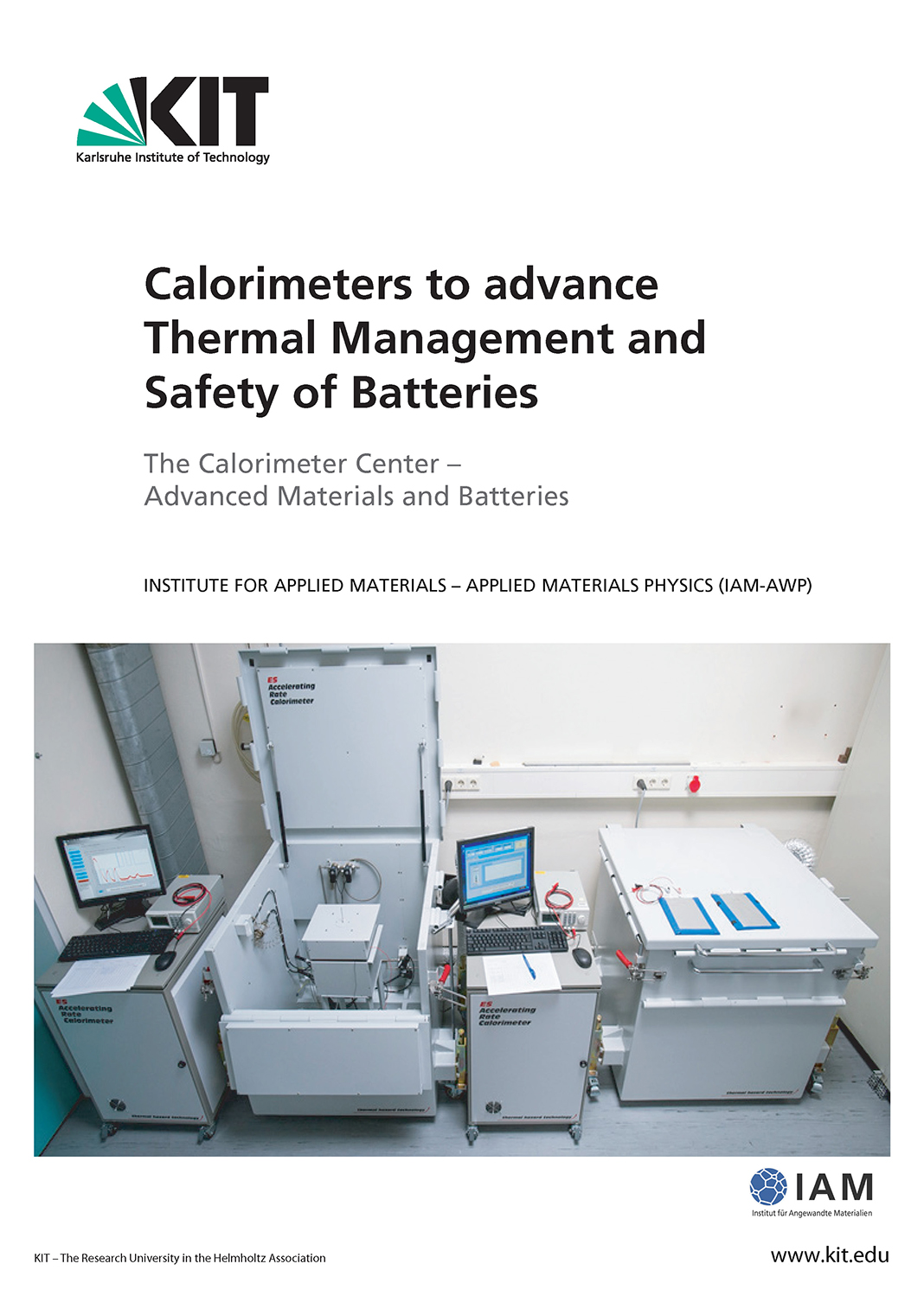The Institute for Applied Materials – Applied Materials Physics (IAM-AWP) at the Karlsruhe Institute of Technology (KIT), Germany, is home to Europe’s largest battery calorimeter laboratory.
With six Accelerating Rate Calorimeters (ARCs) of different sizes used in combination with cyclers, the team led by Dr Carlos Ziebert evaluates the thermodynamics, thermal and safety data for Lithium-ion cells on the material, cell and pack levels under quasiadiabatic and isoperibolic environments for both normal and abuse conditions (thermal, electrical and mechanical).
With these facilities, and the established technical and methodological expertise, the IAM-AWP is one of the few institutions worldwide that investigates thermodynamics and battery safety. The results of the team’s investigations can be used on all levels of the value chain – from safe design to thermal management and the adaptation of safety systems.
Thermodynamics and calorimetry in everyday life
In this booklet Ziebert begins by explaining the ever-growing need for advanced batteries – and therefore the importance of safety in this field. From stringent researching and testing, to the development of Lithium-ion cells for electric transport and sustainable energy storage, the work taking place at the IAM-AWP is changing the ways we think about and use batteries in the present day – and developing applications for the future.
Calorimetry – or the process of measuring heat transfer during chemical reactions – enables Ziebert and his team to generate the data required for optimum battery performance, all with the aim of avoiding thermal runaway, which would be catastrophic in the electric vehicle domain.
The booklet provides a fascinating insight into a science most of us take for granted – the thermodynamics behind what powers our tablets and smartphones, our electric vehicles, and our daily lives in the 21st Century – and by displaying the evidence and data alongside the laboratory’s progress and achievements, Ziebert and his researchers deliver it in a colourful, accessible way.


